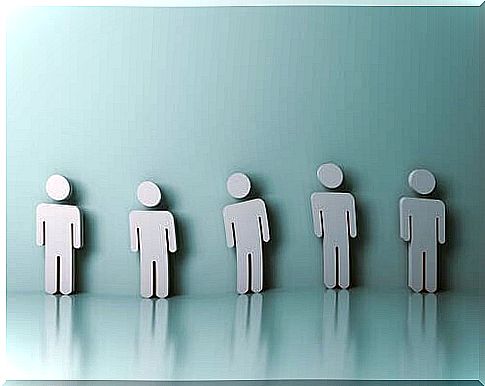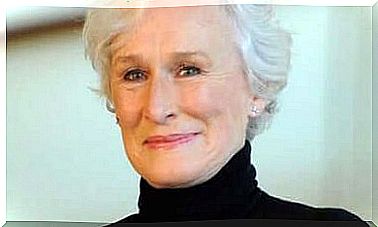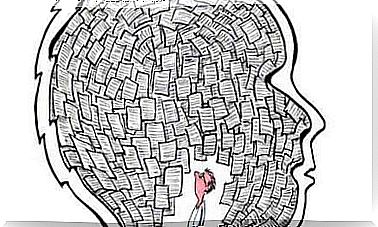What Is Normality?

The concept of “normal” is used frequently and indiscriminately in our society. We often hear that certain things or behaviors are or are not normal. However, things get complicated when we try to define the idea of normality. It is difficult to separate what is normal from what is pathological, strange or bizarre.
A really dangerous aspect of the concept of normality is the connotations associated with it. Indeed, the latter are often used to measure what is or not correct. When we attribute to a person, behavior or thing the characteristic of abnormal, then negative prejudices arise. This, to a certain extent, is due to a misconception of normality, to ignorance of the depth of the term. This is why it is important to understand what “normal” means.
A simple way to approach the term is through the opposite of normality, in other words, the pathological. Understanding these processes and behaviors that are not normal will help us to establish a definition of normality. Therefore, the first definition that we will discuss here is that of the pathological.

Definition of pathological or abnormal
Defining the pathological has always been complicated with regard to psychology in view of the complexity to delimit the criteria thereof. In addition, there is the difficulty of knowing what to do with the strange or abnormal. A debate still open in psychology is that the pathological should be considered as susceptible of diagnosis or therapy; The question then arises as to which pathological behaviors should or should not be treated, and which criteria to follow.
When defining the pathological or abnormal in psychology, four distinct criteria are generally used. We must clarify that it is not necessary to meet all the criteria to consider something abnormal. It should be approached as 4 dimensions characterized in qualitatively different ways.
The 4 criteria are:
- The statistical criterion: it is based on the idea that normality is what is most likely. This is a mathematical criterion based on data, the most frequently repeated behaviors will be normal; while those that occur little will be pathological or abnormal. This criterion has a great force insofar as it supposes an objective method to determine normality, but it loses its effectiveness when there is a lot of variability; and we also encounter the problem of defining the percentage threshold which implies the passage from abnormal to normal.
- The biological criterion: here we take into account the natural biological laws and processes to determine normality. Behaviors or processes that follow biological normality will not be considered pathological. The problem with this criterion is that biological laws are scientific models which can be incomplete and erroneous; and new data can be interpreted as a pathology rather than a part associated with the normal process.
- The social criterion: it is based on the idea that normality is what society accepts as normal. Society, through intersubjectivity and social knowledge, establishes the characteristics that normality must fulfill. We can attribute to this conception a strong historical and cultural bias; according to the times and the culture, the concept will vary.
- The subjective criterion: according to this criterion, pathological behaviors would be those that the subject who performs them sees as such. This criterion is very deficient on many occasions because it presents a great subjectivity and is strongly biased; because we tend to think of all of our behaviors as normal.
The criteria that we have outlined above are useful in order to diagnose and treat disorders in clinical psychology. However, we can see that they are of little use in really deepening the sense of normalcy. They are however useful for us to understand or approach the notion that we have of what is strange or abnormal.

Normality in the socio-constructivist sense
Socio-constructivism can help us understand the concept of normality. From this prism, it is understood that all knowledge is constructed through the interaction of the individual with society and its environment. Normality would therefore be another idea constructed within the framework of this interaction.
This means that normality can never be treated on the basis of an objectivity decontextualized from social intersubjectivity. In other words, we will never be able to speak of normality in general, but rather of normality in a given society. It also implies that no matter what criteria we use to define the pathological, they all fall back into the social conceptualization of strange or abnormal. Such a point of view brings us an interesting and curious vision, and may involve another ethical-moral debate.
Not everything that we consider strange and abnormal does not necessarily have to be associated with a problematic or negative disposition of the individual performing such abnormal behavior. In reality, it would be the society which excludes behaviors, ideas or characteristics, qualifying them as strange or abnormal. This largely explains, for example, the great variability recorded in behaviors, actions and feelings under the label of normality and anomaly throughout the story. For example, it was normal and legitimate centuries ago to kill a person if our honor had hurt, behavior that we now consider strange and immoral.
We could therefore say that normality is a social construction which encompasses behaviors, ideas and characteristics which adapt to life in society. It is a means of self-regulation on which society relies. This is why psychology takes paradigms out of disorders and disabilities based on functional diversity; we consider that the abnormality is generated by society, and that it is not a characteristic of the individual.










